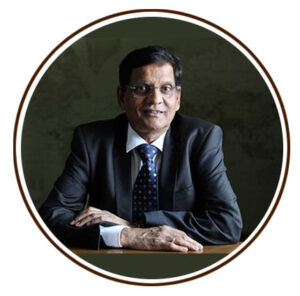 The insights shared by Mr. Shreegopal Kabra, Managing Director & Group President of RR Global serve as a wake-up call for the industry and policymakers alike. Prioritizing electrical fire safety is not just about compliance—it is about saving lives. The time to act is now.
The insights shared by Mr. Shreegopal Kabra, Managing Director & Group President of RR Global serve as a wake-up call for the industry and policymakers alike. Prioritizing electrical fire safety is not just about compliance—it is about saving lives. The time to act is now.
Electrical fire safety is a critical aspect of infrastructure and public safety, yet it has often been overlooked. Despite advancements in electrical systems and safety technologies, fire hazards due to faulty wiring, poor-quality cables, and a general lack of awareness continue to pose a significant risk. The absence of a ‘safety culture’ and cost-driven compromises further exacerbate the issue.
Shreegopal Kabra, Managing Director & Group President of RR Global, highlighted the pressing concerns surrounding electrical fire safety in India. He stated, “Electrical fire safety is the biggest challenge in our country. After a road accident, the highest death (happens in the country) is because of fire.” His observation underscores the urgent need for improved safety measures and stricter enforcement of fire safety regulations.
The Hidden Dangers of Electrical Fires
One of the most alarming aspects of electrical fires is not just the flames themselves, but the deadly consequences of smoke inhalation. Mr. Kabra pointed out that most fatalities in electrical fires are caused by suffocation and poor visibility due to toxic smoke generated by burning wire casings. Standard PVC wires, widely used in buildings, are particularly hazardous as they emit poisonous fumes when exposed to high temperatures.
Many consumers and even industry professionals believe that Flame Retardant Low Smoke (FRLS) wires provide a safer alternative. However, Mr. Kabra challenges this perception, stating, “There is no wire such call is FRLS anywhere in the world – FRLS are slightly modified PVC wires.” This revelation highlights a major misconception in the market, where safety claims of certain products may not always align with their real-world performance.
The Call for Stricter Safety Standards
To mitigate these hazards, Mr. Kabra advocates for stringent regulatory measures. He strongly recommends that the government enforce strict norms to ensure only the highest quality fire-resistant wires and cables are used in construction and infrastructure projects.
Additionally, he emphasizes the responsibility of consultants and engineers in prioritizing safety over cost-cutting. “The consultants should realise that they are appointed not to save the cost but to create safe buildings because the people who are hiring them do not know about the products,” he asserts. This statement reflects the need for a shift in mindset within the industry, where safety must take precedence over short-term financial considerations.
Building a Safety-First Culture
While regulations and enforcement play a crucial role, fostering a culture of safety is equally essential. This includes:
- Public Awareness: Educating consumers, electricians, and builders about the dangers of using substandard wiring and the benefits of fire-resistant cables.
- Industry Accountability: Encouraging manufacturers to innovate and produce genuinely fire-safe products that comply with global standards.
- Government Intervention: Implementing stricter certification processes and ensuring that only approved cables are used in critical infrastructure.
The Road Ahead
With increasing urbanization and infrastructure growth, ensuring electrical fire safety should be a top priority. Stakeholders across industries must collaborate to establish and enforce higher safety standards. Awareness campaigns, policy reforms, and technological advancements in fire-resistant materials can collectively contribute to reducing fire-related casualties in the country.
The insights shared by Mr. Kabra serve as a wake-up call for the industry and policymakers alike. Prioritizing electrical fire safety is not just about compliance—it is about saving lives. The time to act is now.


